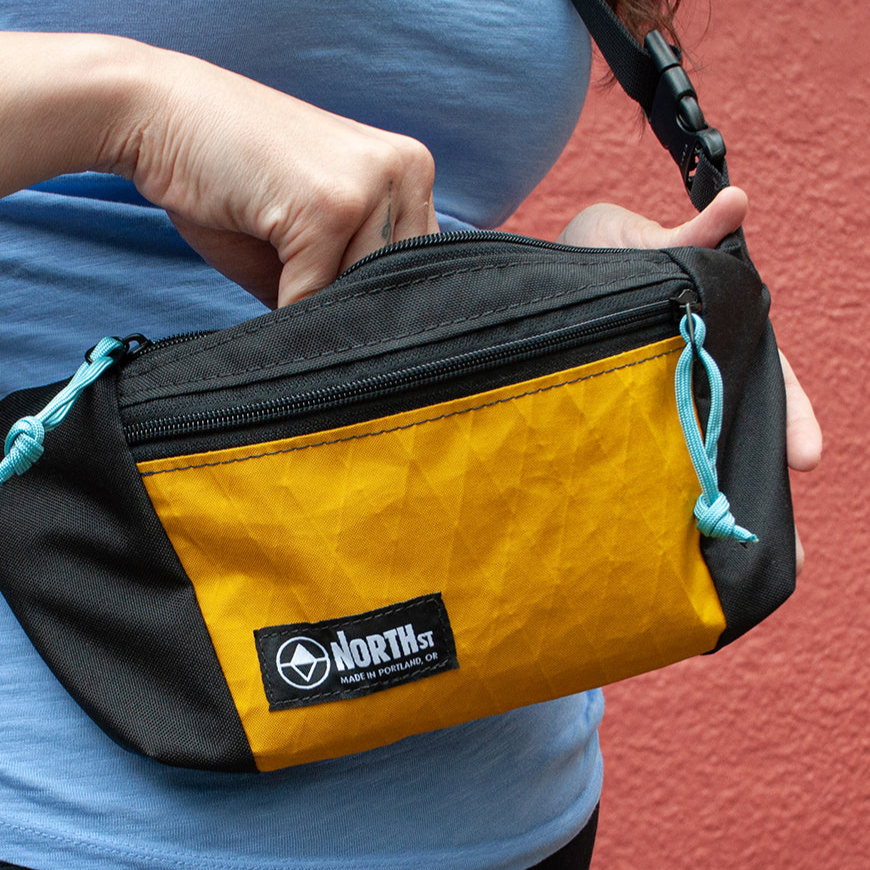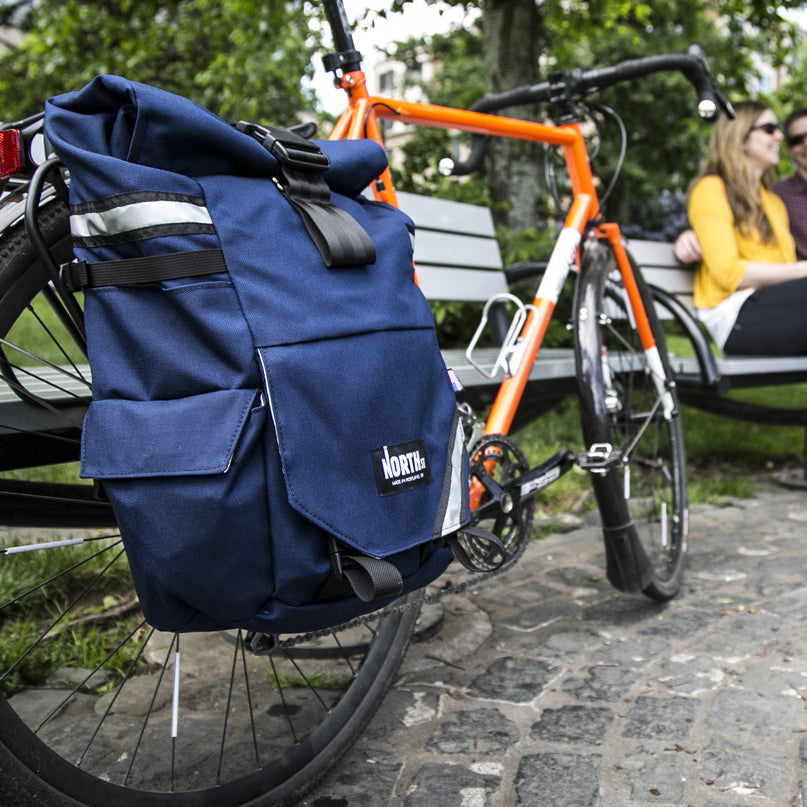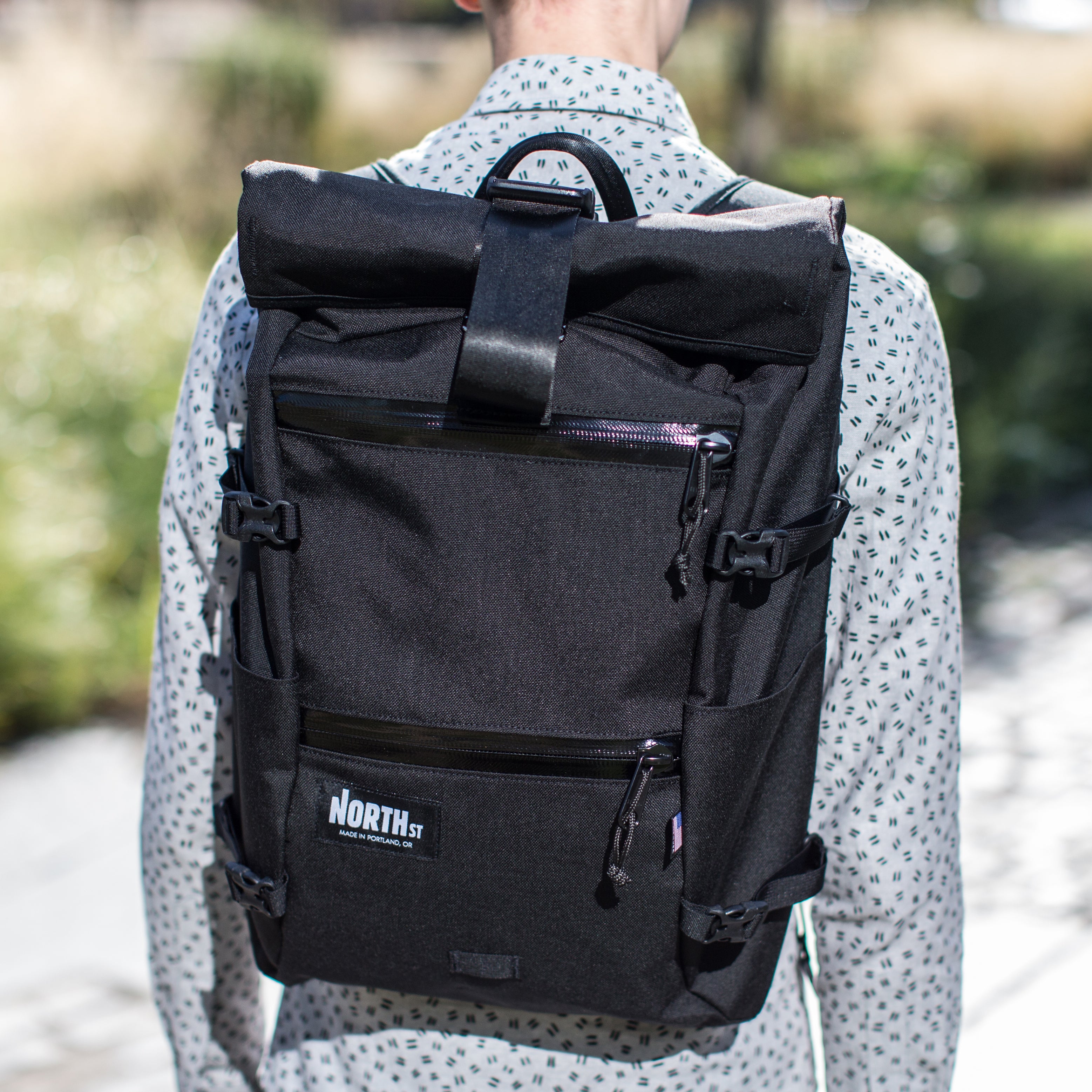Fall is hands down the most satisfying season for bike commuting — for me at least. Cooler temps, less traffic stress and the perfect crisp morning air. As I’ve ridden around North Portland for work, errands and social gatherings, I’ve thought about the balance between overheating and ending up cold — or worse cold and wet.
The key to comfortable fall bike commuting isn’t bulk — it’s temperature control. You want to warm up quickly without trapping moisture, and peel layers the moment you don’t need them.
Below is a practical guide to fall layering for cyclists, plus a few bag setups that make it easy to stash gear mid-ride.
1) Start With Moisture Management, Not Warmth
Most discomfort on fall rides comes from sweating early and then cooling down in damp clothing later. The base layer you start with does more for comfort than the outer layer on top of it. Trust your instinct on this. If you run hot (like I do), aim for a less-is-more approach to warmth. If you know you’ll freeze out there, be sure to adjust for that too.
Aim to feel slightly cold at roll-out — that means you won’t overheat once you’re moving.
Best choices:
-
Lightweight merino or synthetic long sleeve
-
Don’t choose cotton (stays wet = instant chill)
-
Stretch cuffs or thumb loops if mornings are windy
A dry rider stays warm. A warm-but-sweaty rider gets cold later.
2) Use “Peelable” Layers Instead of One Heavy Jacket
Fall is zipper season. Temperature can swing 10–20 degrees between morning and afternoon, so skip the bulky jacket and use swappable layers that come off easily mid-ride.
|
Temps |
Great setup |
|
50s–60s |
Light synthetic base + wind vest |
|
Low 50s |
Thin jersey + packable shell |
|
40s |
Base layer + light insulated vest + wind shell |
This only works well if you can stash those layers somewhere once you warm up.
A compact bag like the Pioneer 9 Handlebar Pack is perfect for storing a packable layer or gloves without carrying a full backpack.

3) Focus on Core, Head, and Hands First
Your legs are self-heating while pedaling — but your core, ears, and hands need the help.
Micro-adjustments that make a big difference:
-
Thin liner gloves + wind mitt = high versatility
-
Buff or cap under helmet = huge boost on descents
-
Mid-layer vest that can come off instantly
A small pannier is a great sidekick for colder rides. Stash your layers in the Commuter Macro Pannier 21L. Compact but roomy.
4) A Packable Shell Is Your Fall MVP
You don’t need a winter jacket yet — just something windproof and “drizzle-proof,” not heavy rain gear.
Look for:
-
Breathable or vented fabric
-
Packs down small
-
Easy on/off during the ride
For riders hauling a bigger layer or spare clothes for the ride home, a convertible backpack pannier offers extra capacity without bulk.
5) Plan for a Rainy Ride
In the Pacific NW, rainy commutes in the fall are practically a given. Even if the sky is clear in the morning, clouds could gather and drops could start falling for the ride home in the evening. I make a habit of keeping a packable shell in my bag, even for shorter trips.
Tips:
-
Keep it on hand and easy to reach in case the rain starts during the ride
-
Packs down small so it doesn’t dominate space in your bag
-
Easy on/off during the ride
Quick Fall Commuter Checklist
-
✅ Breathable base layer
-
✅ Peelable wind or rain layer
-
✅ Gloves + ear coverage
-
✅ Bag sized to stash one full layer
-
✅ Dry spare top for the warmer ride home
Recommended Bags for Fall Layering
|
Best For |
Bag |
Why It Works |
|
Quick access |
Stash gloves/cap on the fly |
|
|
Layer storage |
Compact but perfect volume for a shell |
|
|
All-day flexibility |
Extra space without feeling bulky |
Fall is an “adjustment season.” A good bag makes those adjustments frictionless and keeps you comfortable from first mile to last.
Ride safe out there!



